Laid to Waste
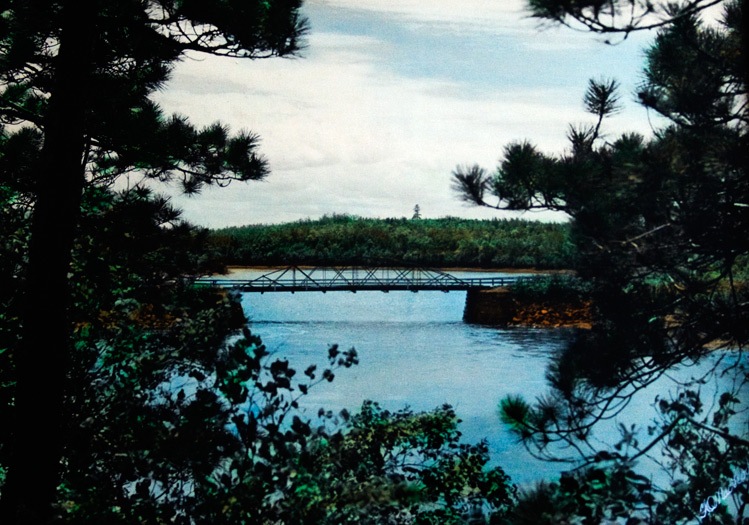
caption
A photo of the single-lane bridge still hangs in Doug MacKay's house.Boat Harbour cleanup plans gone stale
Editor's Note
This story was originally published April 23, 2009 at boatharbour.kingsjournalism.com (which is now no longer active). King's Journalism is moving various projects from the Investigative Workshop to the The Signal. This story appears as it did when it was originally published.
Doug MacKay and his friends pile into a small boat and push off Nova Scotia’s Northumberland shore, fighting against the whirlpool current when they near their favourite inlet. The outboard motor, throttle wide open, keeps them stationary on this warm August day at the mouth of the inlet, where the water flows into the strait.
The group rests for a moment under a single-lane bridge build during the horse and buggy days. MacKay grabs a paddle from the floor of the boat, finds a beam under the bridge, and pushes the boat further into the mouth of the inlet. Finally, he reaches a weak point in the current and the boat crawls through the water on its own, slowly accelerating. They’re off to Pine Island. As MacKay and his friends approach, the strong, fresh smell of pine intensifies. They cut the motor. The remaining momentum is enough to bring them gently to rest on the muddy shore.
When he was 11, MacKay learned to swim in this body of water, known as Boat Harbour. Now as a teenager, he comes back here in summer to enjoy the simple pleasures of nature. He and his friends dig clams and cook them in salt water over a fire on the shore. They swim, explore and do the things any kid would do before the novelty of the summer holiday fades.
But then the memory itself fades, carried away on the swift current of the more than 40 years since Boat Harbour died.
“It was such a pleasant place,” MacKay, now 75, recalls. “It was so heartbreaking to see how it was totally laid to waste.”
Through 1966 and 1967, the Nova Scotia water authority turned Boat Harbour into an industrial waste treatment lagoon. It was part of a deal to build a new Scott Paper Company pulp mill at nearby Abercrombie Point.
On Nov. 14, 1967, 25 million gallons (112 million litres) of mill waste began sluicing into the once-pristine waters every day, changing forever the character of the land. The transformation profoundly affected residents, including those who live on the Pictou Landing Mi’kmaq First Nation that hugs the shores of Boat Harbour.
“I see this situation as people coming into our backyard and literally poopin’ in our yard. I can’t describe it any other way,” said Jonathan Beadle, a community activist on the reserve who has spoken out against the water pollution for years.
“This is one of Nova Scotia’s dirtiest little secrets.”
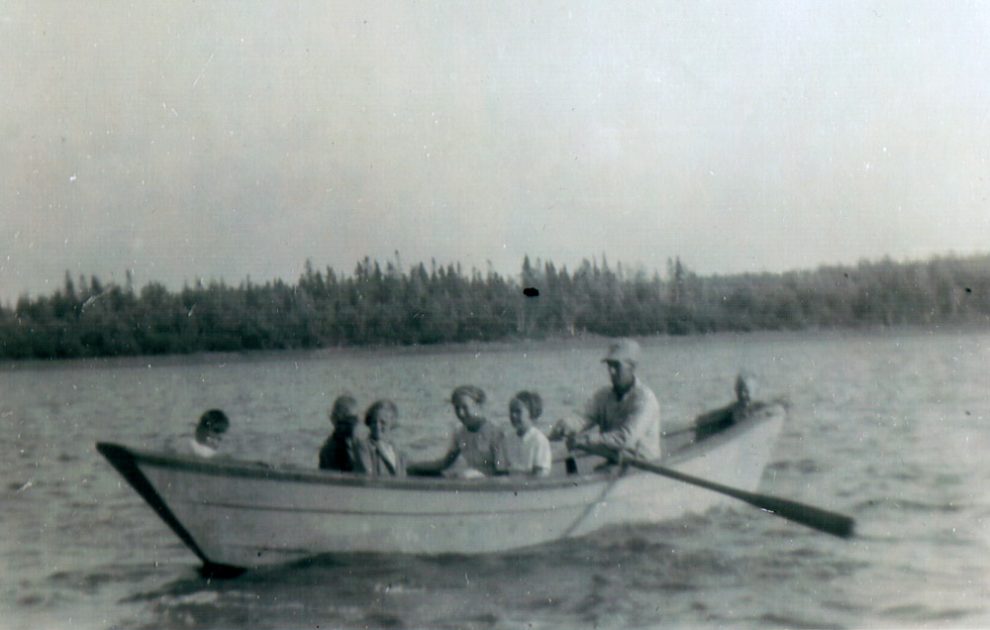
caption
A photo taken in the late forties of Doug Mackay’s neighbours, the Frasers, rowing in Boat Harbour.While much has been done to improve the pulp mill waste in the 42 years since then, the fine sediments of Boat Harbour are contaminated with some of the most dangerous substances known to science, creating a legacy of toxic pollution that haunts the area to this day. There are no fish because there is no oxygen in the water. The provincial and federal governments have spent millions on environmental and health studies and tens of millions more to compensate the first nation, but repeated attempts to fix the mess have failed. Local residents, some living a few hundred metres from Boat Harbour, fear for their health. And because it was created by the province, Nova Scotians still own the place and are responsible for cleaning it up.
MacKay has lived all his life in Pictou County and his property borders Boat Harbour. He built this place in 1958. He sits in his kitchen, black and white photos of the formerly idyllic Boat Harbour spread across his small dining table.
He was snowmobiling with friends on the day he realized it would never be the same. “I looked behind me and black water was curling up in my track,” he said.
It was the winter of 1967.
MacKay recalls pointing his sled back towards the shore and feeling the back begin to sink. He jumped off.
His feet broke through the ice but, somehow, two feet below, he found solid footing. He then realized he had been snowmobiling on top of the wastewater from the mill. A strong wind had carried it across the icy surface of the lagoon and a thin new layer of ice formed on top. MacKay had been sledding on top of black, foul-smelling mill waste that now coated him up to his knees.
It was a far cry from what local residents had been told would happen before the mill opened. “(Officials) told us in the meetings they had at the CNR Club…that, ‘yeah, the water might be black or discloured, but you could drink it.’ Yeah, we were all told that” MacKay recalls.
Soon, those same residents were up in arms, calling public meetings about the treatment lagoon in their backyards. The province appointed consulting firm Rust and Associates to investigate and letters from the public poured in. One, dated March 22, 1970, came from Dr. Joseph B. MacDonald, a physician practicing in Stellarton, not far from Boat Harbour. He had written to the government before the pulp mill opened, condemning the plan to use Boat Harbour for waste treatment.
Now, the plant in operation for more than two years, he wrote that the wastewater treatment was “inefficient and inadequate as judged by present day standards.” He aired several of the community’s grievances, including concerns about the toxicity of the waste, the lack of oxygen in the water, and the water authority’s failure to install aerators to mix oxygen in.
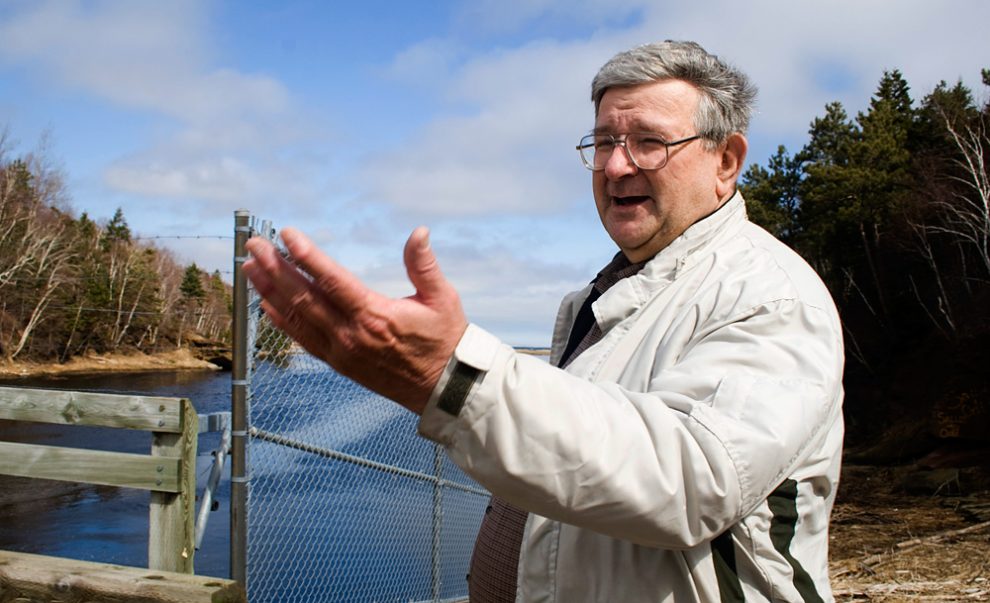
caption
Bob Christie.Bob Christie, a local environmentalist and a former engineer at Canso Chemicals, itself once a polluter of Boat Harbour, said dumping the mill waste into the lagoon was a theoretically good idea gone wrong.
“Rather than using a pile of treatment chemicals it would be a natural, living machine,” He said. “The effluent would come into a natural environment and the environment would clean it. But the poor environment, it got hit in the face with a brick.”
Christie remembers the stench of stagnant water. “It used to come in like a fog,” he said. “You went in the house and closed the windows. That’s how bad it was. I’ve actually seen birds dive to the ground and start walking.”
Rust’s was the first of many consultant reports to play down concerns, calling the problems with Boat Harbour mainly aesthetic. The report recommended installing wastewater sampling devices and treatment equipment to address the odour and discoloured water. The provincial government and the mill soon installed aerators to add oxygen to the wastewater, put in settling ponds, and dredged waste from the smaller lagoon that received the waste first before discharging it into a larger one.
These efforts cost several million 1970 dollars. A citizens group that had fought for improvements praised Scott Paper and predicted better conditions in future. But as time would show, fixing Boat Harbour would take a great deal more effort than that.
Complaints continued within the neighbouring communities and toxic substances continued to build up in the lagoon. Members of the Pictou Landing First Nation realized just how badly the government had misled them in exchange for the right to dump toxic waste into the natural lagoon. In 1970, Louis Francis, the former chief who had accepted $60,000 payment for the use of Boat Harbour, told Mysterious East magazine “if they gave me another chance to sell Boat Harbour again, I wouldn’t let them have it for six million dollars.”
The federal government would soon pay far more than that.
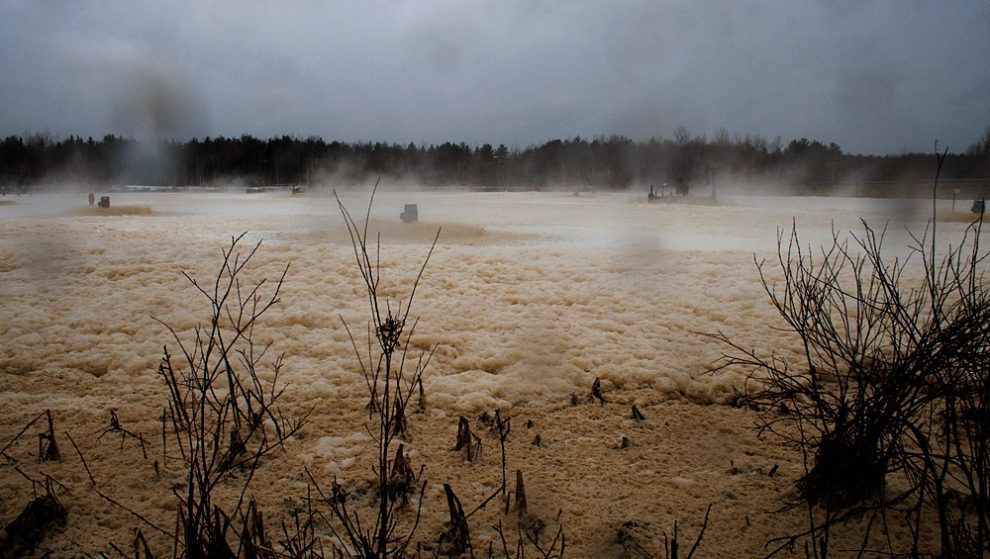
caption
The aeration lagoon next to the Boat Harbour treatment facility.After fruitless attempts to sue the province, the band approached Daniel Paul, a mid-level bureaucrat with the federal department of Indian Affairs in Halifax. Paul was appalled by what he heard.
He persuaded the band it was going after the wrong government and should sue Ottawa instead. “I told them at the time that they had no case against the province; the province didn’t do anything. They couldn’t have done anything unless they had the consent of the federal government. So those are the people you have to go after.”
On May 12, 1986, the band filed a 10-page statement of claim in the federal court. It contended that Ottawa had failed in its duty to protect the band’s interests “Boat Harbour has become seriously polluted,” the statement read. “As a result, members of the band have suffered and continue to suffer damage to their health and the enjoyment of the amenities of their reserve lands.”
At first, Ottawa sniffed at the small Mi’kmaq band from Nova Scotia. In an amended statement of defence filed on July 17, 1989, the government pointed out the band had agreed to the use of Boat Harbour for mill waste and that in any case, the improvements made after the Rust report had fixed any problems that had existed.
“This action by the Province of Nova Scotia cured the septic condition of Boat Harbour and no pollution or septic condition has existed in Boat Harbour since that time,” the statement reads.
But the band wasn’t deterred. It hired lawyer Esbon Anthony Ross, today an Eastern Caribbean Supreme Court judge, to take on its case. Federal Court records show he obtained an order forcing the province to hand over reams of documents about Boat Harbour, to add to boatloads of evidence handed over by the federal government. The case was to go ahead in June 1989, but it never did.
Paul said the crown realized the band was amassing an overwhelming case against it, and folded.
“All of a sudden we get a phone call from Ottawa and they said ‘let’s sit down and have a preliminary discussion about things,’” Paul remembers. “We had a meeting with them at the Delta Halifax. They asked us what we were looking for, so we stepped out in the hallway to have a discussion about it and we went out and someone suggested $35 million; it’s a nice round figure. And went back and said that’s what we want,” Paul laughs. “So that was the extent of our negotiations.”
On July 20, 1993, Ottawa signed a historic out-of-court settlement, paying the band exactly that amount. The money was designated to compensate individual band members and to fund “community development.”
The agreement explicitly set aside the problem of cleaning up Boat Harbour. The band got paid, but the mess persisted.
Two committees were set up in the wake of the deal. Those committees, one involving the band and several federal departments, the other the band, the paper mill, the province and Ottawa, have met pretty much every month since.
The province, meantime, started to make a more concerted to find a permanent solution to the problem it had created in the 1960s, an effort that has yet to succeed.
New, tougher pulp and paper effluent regulations were forcing the issue, and the federal department of fisheries used its power under the Fisheries Act to force Nova Scotia to take action. Members of the band also agitated for a cleanup and the Mi’kmaq Warrior Society set up a protest barricade shortly after the $35 million deal was inked. The Minister of Supply and Services at the time, Wayne Adams, promised Boat Harbour would be cleaned up. He wouldn’t be the last minister to make that promise. Two years later, Gerald O`Malley, his successor in the post, said it would “absolutely” close by 2005. The Rodney MacDonald government recently promised yet again Boat Harbour would be shut down.
During the 90s, efforts to find a solution intensified, yet ultimately failed. A series of solutions were proposed, each one dropped in turn. (Read the details in this sidebar story).
Consultants suggested building an entirely new treatment plant on the mill site. But that was rejected as too costly.
The province proposed piping the waste, by then much improved from the early days, two kilometers out into Northumberland Strait. That had too high a political cost, as fishermen rallied to protect their catch.
The most recent plan would have released treated waste on the receding tide, and opened the larger of the two lagoons in Boat Harbour to the sea again. But it turned out that plan could make matters worse .It was quietly dropped, but a website dedicated to its handling and details remains, and the plan is still underway as far as the public knows.
One observer quipped that consultants have made entire careers on Boat Harbour. And indeed, government-hired researchers have studied everything from water supplies to the contaminants in the sediments of the larger boat harbour lagoon. Those contaminants remain there today and are some of the worst substances known. They include heavy metals such as mercury and cadmium, and levels of dioxins and furans that exceed even those considered acceptable for industrial areas.
Engineer Chris Moir is the province’s lead hand on the Boat Harbour file.
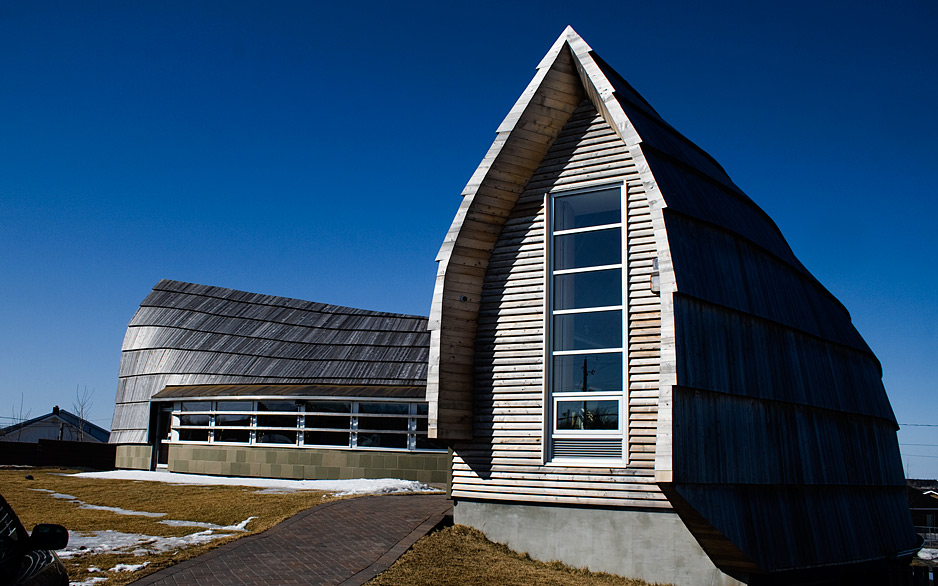
caption
The Pictou Landing Health Centre.“Since we deposited the sediment, the polluter pays and it’s our obligation to get it out of there. That’s why we’re doing the cleanup,” said Moir, manager of the Environmental Services Group with the N.S. Department of Transportation and Infrastructure Renewal.
Moir said the toxins sound scarier than they really are. “They are high enough to be an issue for marine life but once you take the stuff out of the water, with the exception of dioxins, you can spread it on your lawn,” he said.
Ron Russell isn’t so sure. He’s an environmental toxicologist at Saint Mary’s University in Halifax.
“Dioxins and furans are some of the nastiest toxins ever produced,” he said. “They are exclusively a byproduct of industrial processes like kraft pulp… (and) a possible carcinogen.”
“I’d be very upset if they dumped this in my backyard.”
Many local residents are indeed upset. Both on reserve and off, fears and anxiety persist about the effects of these poisons on local health, despite studies that have suggested there’s nothing to be worried about. The joint federal-band committee that oversees health and environmental issues recently hired consultants to go over all of the studies done to date.
“There is a lot of cancer in this community,” said Dr. Cathy Felderhof, who works at the Pictou Landing Health Centre. “And certainly the question is raised amongst members of the community. They wonder. I mean how can you not wonder, when you are surrounded by all this – air, water and land?”
Felderhof said she also sees a lot of skin problems, such as boils.
“The community is definitely concerned about the effect of Boat Harbour on their people. Absolutely. They’re concerned about their little children growing up, what they’re exposed to.”
Off the reserve, MacKay wonders about the cause of his wife’s fatal lung cancer. She died of the disease three and a half years ago. She never smoked a cigarette in her life.
“There was never a more cleaner living person on the earth than she was,” MacKay said. “So you can think all you want (about) where this stuff all originated from, but you have no proof of it. And maybe it’s not even related, but you are highly suspicious of it.”
Ross MacFarlane owns land at Pictou Landing and moved to Oakville, Ont. in 1973. He said people in the area have put up with a lot over the past four decades for the sake of the paper mill jobs.
“If you created that environment in a more affluent community, like in southern Ontario, there would be a revolution. These people have put up with a chemical smell either from the stacks or from Boat Harbour for their entire living lives,” MacFarlane said. “I think the government, in order to get that plant, put themselves in a subservient position with the industry that they were never able to rise out of.”
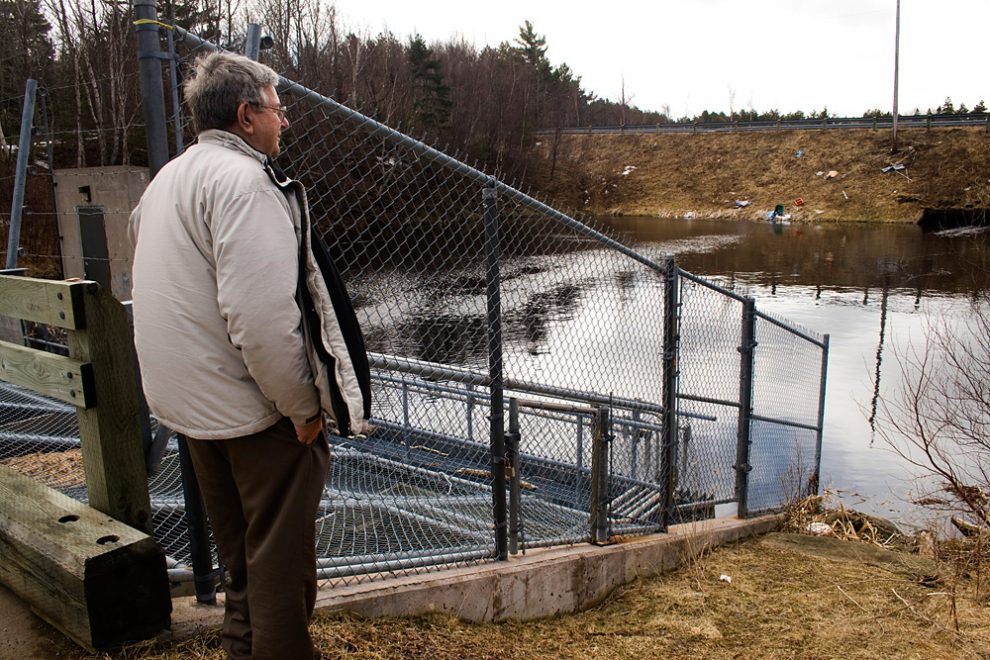
caption
Bob Christie looks at the dam which replaced a bridge leading into the lagoon.Today, Boat Harbour remains about as it did 10 years ago, still processing millions of litres of mill wastewater every day. Many in the area are losing faith that they will ever see Boat Harbour closed or Nova Scotia’s 42-year-old toxic legacy cleaned up, at least as long as the mill remains open.
Dave Crawford, a fisherman who helped kill the 1990s plan to pipe mill effluent two kilometres out into the strait, believes Boat Harbour hasn’t been cleaned up because it’s just too expensive.
“They tried to get away (with) the cheapest way possible, the province of Nova Scotia and the federal government, and we put a nix to that and until they come up with a pile of money and can do it right, they’re just going to let it lay dormant, I think,” he said.
Clarrie MacKinnon, the NDP MLA for Pictou East, likened Boat Harbour to a “dormant volcano that must be addressed.”
“When the pulp mill ceases to exist,” he added, “there will be a massive cleanup that will be needed to restore Boat Harbour to some sort of condition to where it used to be.”
MacKay, too, wonders if he will ever see Boat Harbour returned to what it was.
“Cleaning up is so expensive that they don’t know how to do it, and then there’s so many people with so many different opinions here in this community,” said MacKay. “We can holler ‘clean it up’ and whatever and then, as I say, to clean it up they have to drain it (but) it has to go into Northumberland Strait and you’ve got the fishery fighting back the other way saying ‘no, leave it where it’s at.”
“You know, we were told so many things that were proved out to be untrue that now you don’t trust anybody with any dealings with Boat Harbour.”
But Brooke Taylor, minister of transportation and infrastructure renewal, and the latest of a long line of ministers to inherit this file, said there’s no easy solution.
“You’re dealing with a situation that happened many, many years ago,” he said. “Today you probably wouldn’t be able to do that, so to come up with a solution to the current situation, it’s just not easy…There doesn’t seem to be a magic wand one can wave that would automatically satisfy the interests of Pictou Landing and of course the current company, Northern Pulp. So we have what we have. It’s not ideal; I’m the first to admit that, but it probably would have been rectified years ago if there was an easy answer.”

